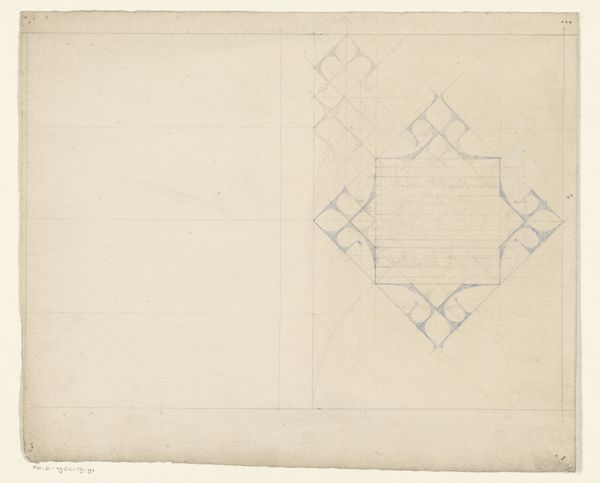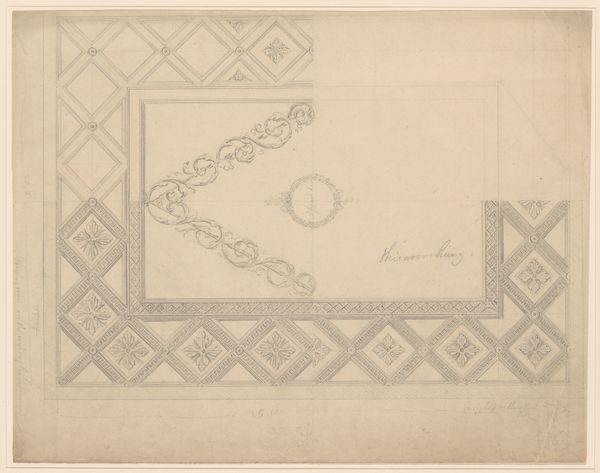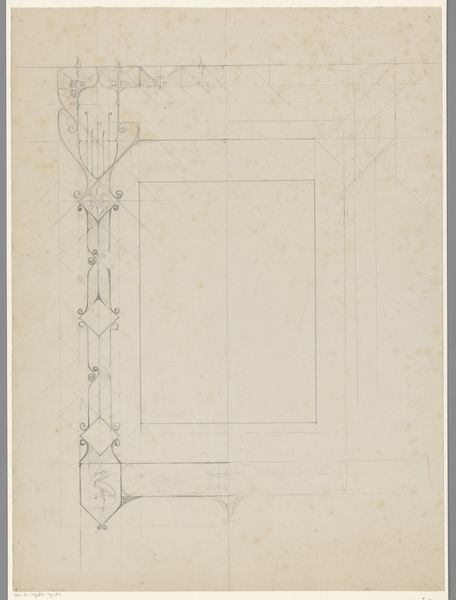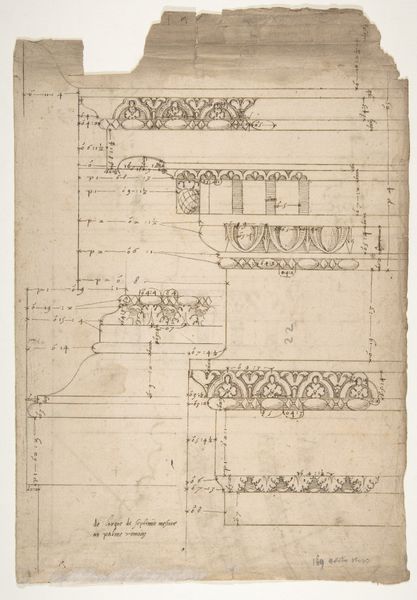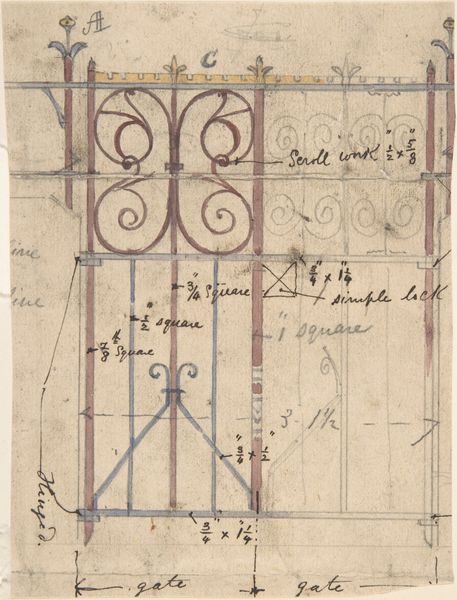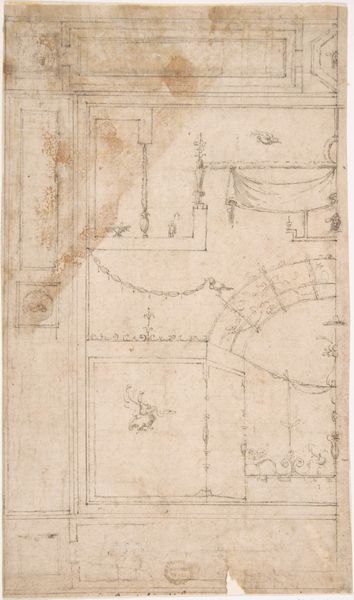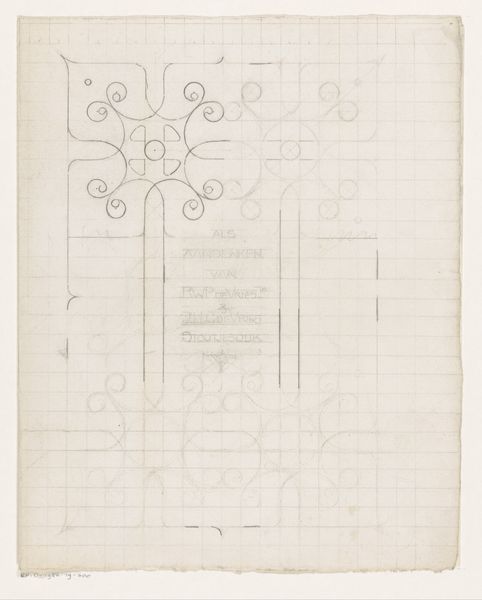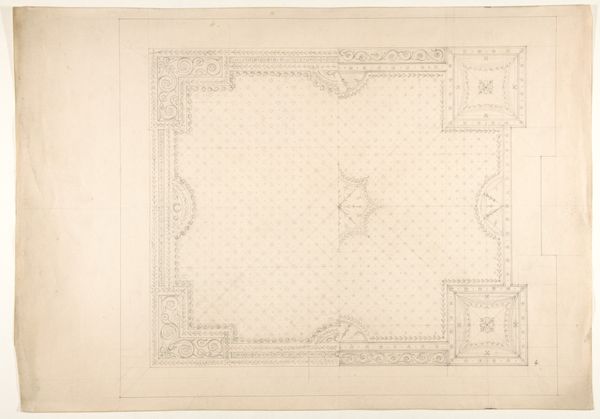
drawing, paper, ink
#
drawing
#
art-nouveau
#
paper
#
ink
#
geometric
#
line
Dimensions: height 159 mm, width 104 mm
Copyright: Rijks Museum: Open Domain
Curator: Alright, let’s dive into this drawing titled "Ontwerpen voor kaders" – meaning "Designs for Frames". The work is attributed to Reinier Willem Petrus de Vries and thought to have been created sometime between 1884 and 1952. It's a fascinating example of Art Nouveau design rendered in ink on paper. Editor: Oh, wow. My immediate impression is almost architectural but incredibly delicate, like blueprints for enchanted picture frames. It feels airy, despite the precise lines. There's a dreamy quality, something almost... fantastical, caught between structure and whimsy. Curator: Exactly. And that tension is central to the Art Nouveau movement. Looking at these frame designs, you can see a rejection of industrial rigidity, though it is evident that mathematical shapes dictate the structure. De Vries incorporates those geometric motifs as base designs to introduce a stylized organicism – what looks like flower buds, twirling vines that soften those hard edges. It’s a push and pull. Editor: You’re so right! See, I initially focused on the flowy bits, but looking closer, the grid behind it all is mesmerizing. The circles, lines, the math! There is almost an undercurrent of industrialism beneath the Art Nouveau's surface, isn't there? I am struck by how purposeful each mark seems. It’s not just pretty—it's clever! What would have inspired these kinds of compositions at that time? Curator: Think about the political and social landscape. We see movements like the Arts and Crafts movement reacting against the perceived dehumanization of industrial manufacturing. Art Nouveau, while embracing new materials and techniques, also looked back to nature and a pre-industrial sense of craftsmanship. This piece can be viewed through the lens of early industrialization— De Vries simultaneously critiques, accommodates, and resists against that mechanization. Editor: I'm so intrigued by that push-and-pull now. I also wonder about the final execution— were these designs meant to be mass produced or more like templates to inspire artisans and crafters? The idea of framing someone's personal photograph with a design informed by such social tensions is also quite lovely in its own right. Curator: The beauty of design is often in this dance between intention and possibility. Thinking through how these designs respond to rapid industrialization is interesting. Editor: True, a constant back-and-forth. It seems De Vries made quite an argument within a very understated sketch!
Comments
No comments
Be the first to comment and join the conversation on the ultimate creative platform.
